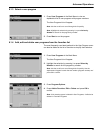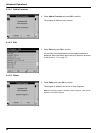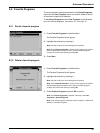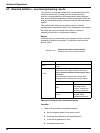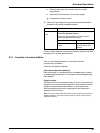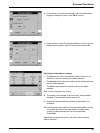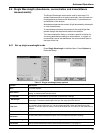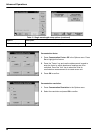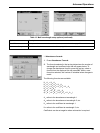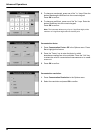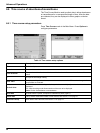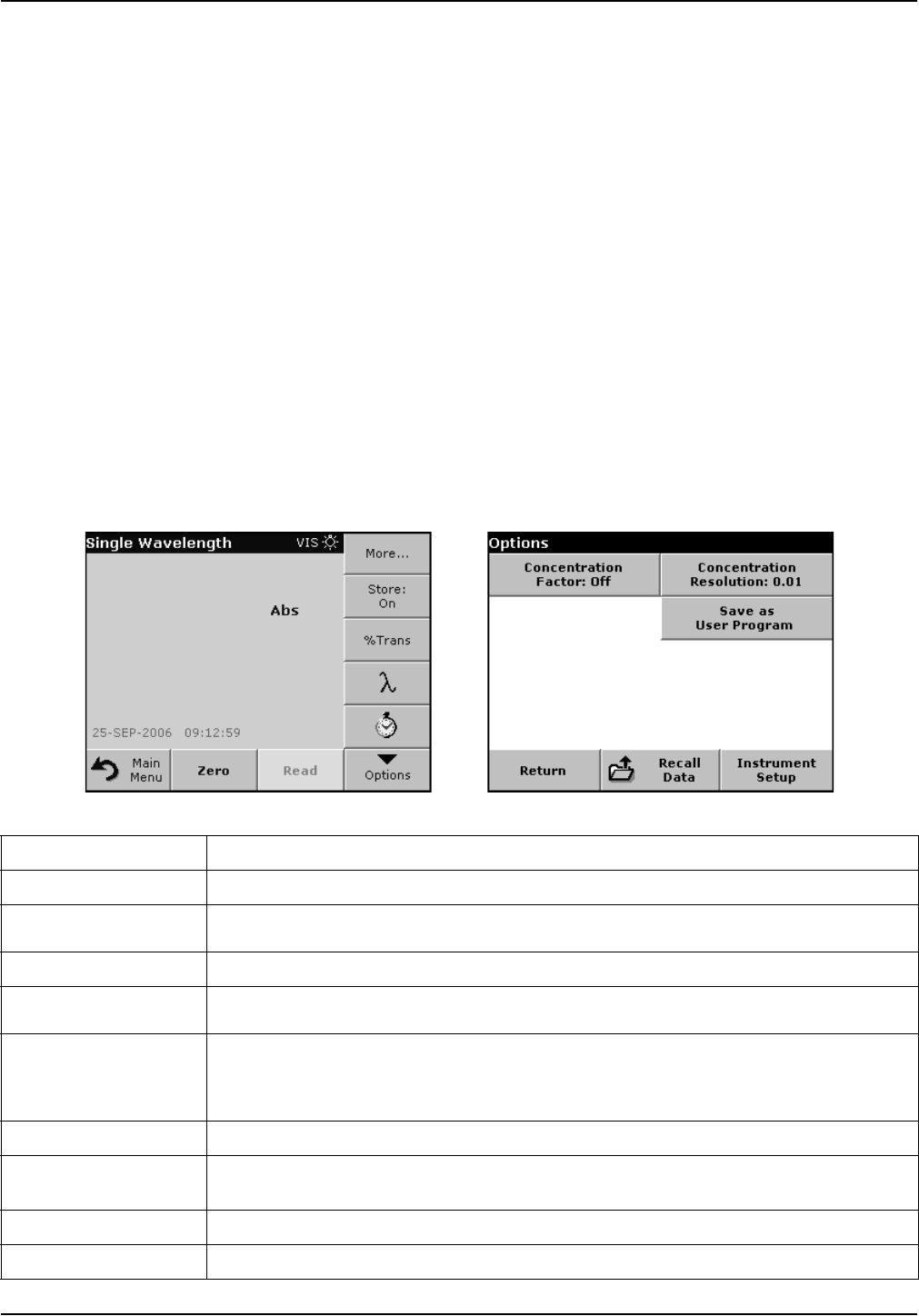
87
Advanced Operations
6.4 Single Wavelength (absorbance, concentration and transmittance
measurements)
The Single Wavelength mode can be used in three ways. For
sample measurements at a single wavelength, the instrument can
be programmed to measure the absorbance, % transmittance or
concentration of the analyte.
Absorbance measures the amount of light absorbed by the sample,
in units of absorbance.
% transmittance measures the percent of the original light that
passes through the sample and reaches the detector.
Turn the concentration factor on to select a specific multiplier for
converting absorbance readings to concentration. In a graph of
concentration versus the absorbance, the concentration factor is
the slope of the line.
6.4.1 Set up single wavelength mode
Press Single Wavelength in the Main Menu. Press Options for
Parameter Setup.
Table 12 Single wavelength setup options
Options Description
More For further Options
Store Off/On
With the Store On setting, all measurement data are stored automatically. With the Store Off
setting, no measurement data are stored.
% Trans/Abs To switch to % transmittance, concentration or absorbance readings
λ Wavelength
To enter the measurement wavelength. Use the alphanumeric keypad to enter the measurement
wavelength. The entered wavelength must be in the range from 340–900 nm.
Timer icon
This functions as a stopwatch. It helps to ensure that the steps of an analysis are correctly timed
(e.g. reaction times, wait times, etc., can be exactly specified). When the specified time has
elapsed, an acoustic signal is emitted. The use of the timer has no influence on the measurement
program.
Concentration Factor Multiplication factor for converting absorbance values into concentration values.
Concentration
Resolution
To select the position of the decimal point in the calculated concentration readings.
Save as User Program To store the selected parameters as a User Program, see section 6.1 on page 61
Recall Data Call up saved measurement data or time courses, see section 5.3 on page 37.



